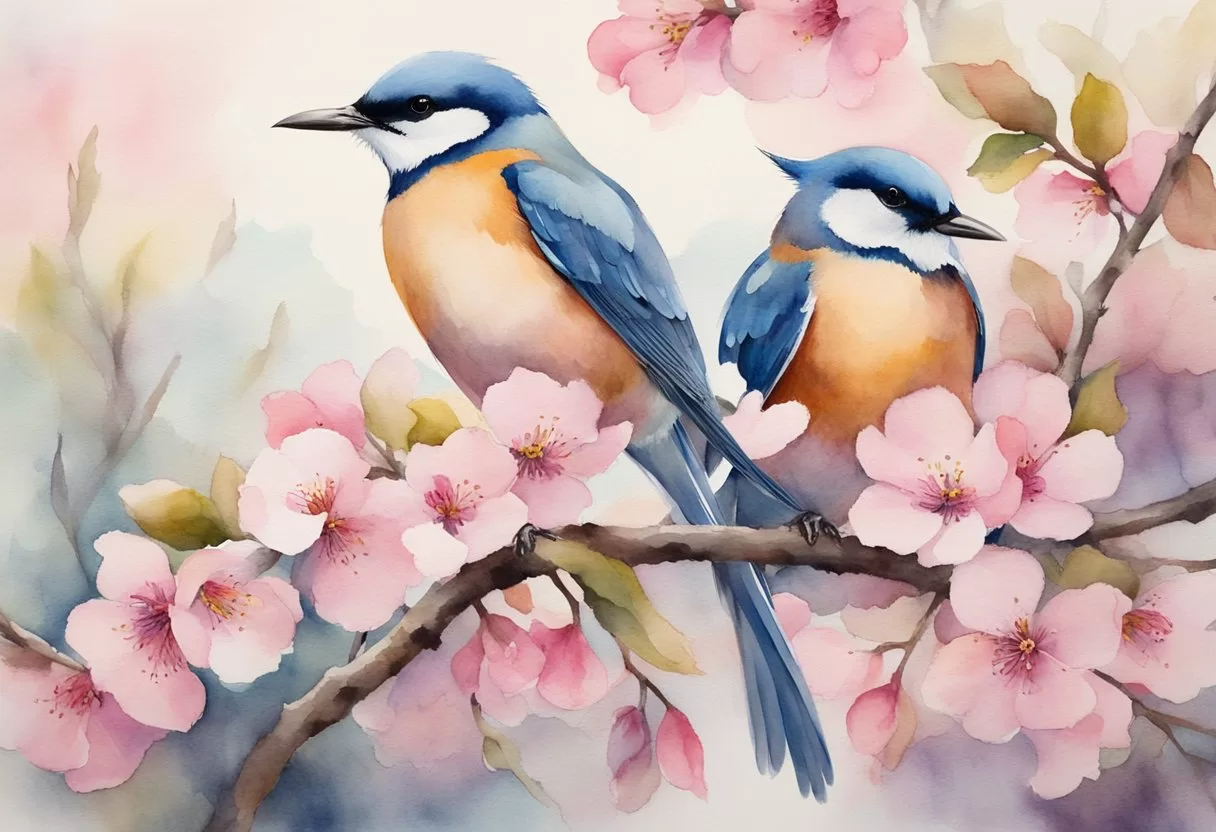The Symbiotic Relationship Between Early Blooming Trees and Nesting Birds
Early blooming trees play a crucial role in supporting nesting birds. They provide essential resources such as nesting habitat, food, and protection, enabling birds to thrive during critical periods in their life cycles.
Essential Role of Trees and Shrubs in Bird Life Cycles
Trees and shrubs serve as vital components of nesting habitats. They offer shelter and protection from predators, creating safe spaces for birds to raise their young.
Many bird species rely on the branches and foliage of these plants for nesting materials. Leaves and twigs are often gathered to build secure nests, which are essential for the survival of the chicks.
Additionally, these plants provide food sources such as insects and nectar. During early spring, as trees begin to bud, birds find an abundance of insects, which are vital for feeding their young. This mutual reliance illustrates how trees and birds coexist symbiotically within their ecosystems.
Key Early Spring Species for Avian Support
Certain tree species are particularly beneficial for birds during their nesting season. For example, native dogwoods and cherry trees bloom early, providing both nectar and nesting sites.
These trees attract pollinators, which, in turn, support insect populations that birds feed on. Additionally, early blossoms signal the start of the nesting season for many migratory birds returning from warmer climates.
Some shrub species, like red-twig dogwood and elderberry, are also important. They produce berries that serve as food sources late in the summer and provide dense cover for nesting.
Creating a garden that includes these native plants enhances biodiversity and supports avian populations, particularly in early spring when resources are scarce. Each tree and shrub plays a role in fostering a thriving bird community.
Attracting and Supporting Birds in Gardens and Landscapes

Creating a bird-friendly garden involves carefully selecting plants that provide food and shelter, along with thoughtful garden design. These elements work together to create an inviting habitat for various bird species.
Selecting Plants to Offer Food and Shelter
When choosing plants, it is essential to focus on native species, as they provide the best support for local birds. Native flowering plants and shrubs produce nectar, seeds, and fruits that attract a variety of birds.
Recommended Plants:
- Berry-producing Shrubs: Such as elderberry and serviceberry, offer food sources.
- Flowering Plants: Plants like coneflowers and asters attract insects, which are vital for insectivorous birds.
- Evergreens: These provide year-round shelter, creating a safe haven for nesting.
Incorporating a mix of deciduous and evergreen trees enhances shelter options. Furthermore, adding birdhouses in suitable locations encourages nesting.
Designing Gardens With Birds in Mind
A bird-friendly garden should include different habitats and features to meet the diverse needs of birds.
Key Design Elements:
- Layered Planting: This encourages natural layering of shrubs and trees, providing varying levels of cover.
- Water Sources: Incorporating bird baths can attract birds and support their hydration needs, especially during dry seasons.
- Open Spaces: Include areas for birds to forage and hunt, like grassy patches or wildflower meadows.
Creating sheltered spots among plants helps protect birds from predators. Arranging these elements thoughtfully fosters a diverse and thriving bird population.
Profiles of Avian-Friendly Flora and Fauna
Integrating the right plants into a garden can create a thriving environment for various bird species. Early blooming trees and shrubs not only provide essential shelter but also serve as a vital food source during nesting season.
Native Plants: A Checklist for Bird-Friendly Gardens
Choosing native plants enhances local biodiversity and supports wildlife. Here are some excellent options for a bird-friendly garden:
- Dogwood: Produces clusters of berries that attract many birds, including cedar waxwings and robins.
- Serviceberry: Its sweet berries are favored by songbirds and can help nourish them as they raise their young.
- Blueberry: Offers delicious fruits that draw in tanagers and other fruit-eating birds.
- Elderberry: Known for its high fruit yield, it supports a variety of species, including jays and mockingbirds.
- Viburnum: This shrub provides dense cover for nesting and produces berries that birds readily consume.
In addition to these, sunflower and coneflower provide seeds that attract a wide array of species, from goldfinches to chickadees.
Bird Spotlight: Species That Benefit from Early Bloomers
Certain bird species thrive in environments where early blooming plants are present.
- Hummingbirds are particularly drawn to flowering trees like cherry and fuchsia, which provide nectar-rich blossoms.
- Orioles are attracted to the bright fruits of crabapple trees, making them a delightful addition.
- Mockingbirds and towhees benefit from shrubs like beautyberry and spicebush, which offer both cover and food.
- Woodpeckers, such as the blue jays and downy woodpeckers, are often seen in gardens with switchgrass and milkweed for shelter and insects.
These avian species are vital indicators of a healthy ecosystem. By planting specific flora, one can enhance the habitat for these birds, promoting biodiversity and a more vibrant garden.
Share this content:

Post Comment
You must be logged in to post a comment.